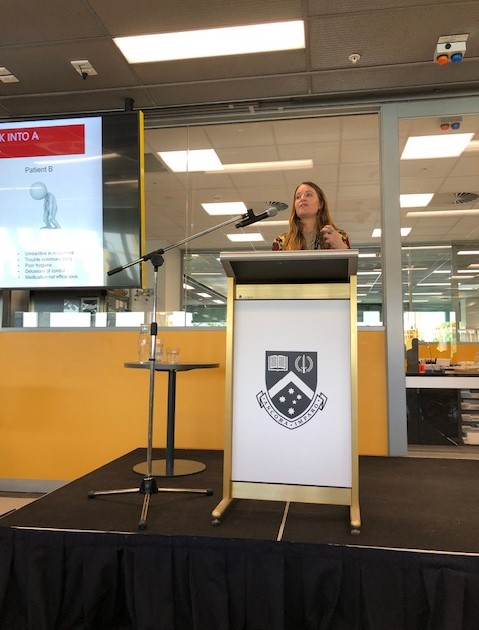Dr Natalie Thomas speaks on translational psychiatry the Inaugural 'Mind the Gap' Neuroscience symposium at Monash
The diagnosis of schizophrenia is based solely on how clinical symptoms present; we have no blood test nor brain scan we can rely on to aid in the clinical diagnosis. Even using our current best method of the so-called psychiatry ‘bible’, the DSM-5, which uses stringent clinical profiling, schizophrenia is still notoriously difficult to diagnose. This is due, in large part, because it manifests so differently in different people- people diagnosed can look remarkably different.
This can also be seen at the biological level, and also treatment response, including treatment using estrogens. Accordingly, the work presented by Dr Natalie Thomas from Monash Alfred Psychiatry research centre, at the Inaugural Monash University Neuroscience Symposium ‘Mind the Gap’ on the 12th November 2019, focused on investigating hormonal and symptom associations, within potential biological subgroups in a group of females with schizophrenia treated with estrogens. The new, soon to be published work, demonstrated that using this method responders could be distinguished from non-responders. Although future large-scale studies are required, this work is encouraging to suggest future blood tests may be developed to help us know which patients this treatment will likely work for. This work also highlights the importance of considering the diversity within the schizophrenia diagnosis, and a move toward personalised medicine approaches.


